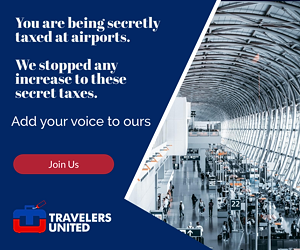Brazil’s documentation requirements for new e-visa have given me pause about filling out the application for travel to Brazil.

About four years ago Brazil dropped their visa requirements for US citizens traveling to their nation. I think that was done to both increase tourism from the US and in the hope that the US would drop its visa requirement for Brazil’s citizens to visit the US. Now that the US has kept the visa requirement for Brazilians in place, Brazil is reimposing theirs for US citizens.
Many countries, like Brazil, require US citizens to obtain a visa to be able to visit their country.

Brazil’s e-visa is applied for online at Brazil eVisa, unlike a typical consular visa that requires an in-person visit to an embassy or consulate or mailing your passport to an embassy, requiring it to be out of your possession for a month or so.
Brazil’s new e-visa is much less expensive than the US visa required for Brazilians to visit the US.
The new Brazilian e-visa will cost US citizens $80.90 USD per person. By contrast, a US tourist visa for Brazilians costs $185.00 USD. The e-visa will be valid for ten years. Canadian and Australian citizens’ Brazilian e-visas will be valid for only five years. The e-visas for the three countries allow multiple visits to Brazil while valid. Since it’s an e-visa, applied for via the Internet, receipt by Brazilian authorities is instantaneous, but the processing time is expected to be as long as five business days. Brazil suggests that applications should be submitted about two months in advance to ensure there will be adequate time to make corrections to the submission, if necessary.
Once Brazil’s e-visa is approved, it comes to applicants via email in the form of a PDF file.
Once the e-visa is approved, applicants will receive an email from the Federative Republic of Brazil with a PDF file attachment containing the e-visa. Travelers will need to download and print the e-visa to present before boarding their flight to Brazil and then to Brazilian authorities upon entry to the country.
Brazil suggests having two printed copies of the e-visa to carry at all times, plus have an image of the e-visa on your smartphone. I recommend that travelers to Brazil store the PDF of the e-visa as a PDF file, readable by an installed PDF app, so you can display the e-visa natively, including enlarging it for viewing detail. That way it’s also easily printed or uploaded to a computer, if necessary. I also suggest saving it to the cloud as a backup, in case the printed copies are destroyed or stolen and your smartphone is lost or stolen.
The potential problem with the new Brazilian e-visa for US.citizens is in the application process, specifically with one of the required documents to accompany the application.
One of the below documents is the one that is seriously problematic for US citizens wishing to go to Brazil.
These are document requirements to apply for a Brazilian e-visa:
- Passport (signed, valid up to end of Brazil trip with two free visa pages)
- Visa application form (completed online)
- Passport-style photo (2”x2”, white background)
- e-visa fee payment
- Confirmation of round trip reservation on a flight, ship or bus showing both entering and exiting Brazil
- Printed bank statement showing transactions for the last 30 days and showing at least $2,000 USD available for travel.
There are other documents required if you’re traveling for business or with minors.
 Having to provide a bank statement to obtain a Brazil e-visa is a serious potential ID theft and kidnapping problem.
Having to provide a bank statement to obtain a Brazil e-visa is a serious potential ID theft and kidnapping problem.
That last document requirement is Brazil e-visa’s problem. Supplying a printed bank statement to Brazil, showing full identification of the applicant, the bank and account numbers, plus all transactions for 30 days and the balance, is a serious problem, a very serious problem.
To me, handing over my bank statement to some clerk working in the Federative Republic of Brazil government is a blatant invitation for identity theft, kidnapping and ransom or possible extortion. All it would take is the criminal action of one clerk, just one.
Bank statements on their own don’t provide enough information to steal your identity, but they provide critical information to thieves to clean out your account if they can get other data, too.
While bank account statements on their own, revealing full name and address, account number and other personal information, plus recent transactions and the balance aren’t alone enough to steal one’s identity, it’s a powerful start. Moreover, with so much identity information for sale on the Internet and elsewhere, if a Brazilian e-visa applicant’s identity is already compromised, the bank account information US citizens must provide to Brazil could easily result in that account being wiped out.
Identity theft and bank theft aren’t the only potential problems that handing over a bank statement to Brazil could cause. In its report earlier this year about kidnapping in Latin America and the Caribbean in 2021, the last year for which the data is available, Statista reports that among other countries in the region, Brazil leads all other nations in kidnappings, with 4,390 kidnappings that year, about four times the second place holder, Peru. News reports would seem to indicate that kidnappings in Brazil remained at a high level this year.
A clerk in the Brazilian government with access to the bank data could easily classify each tourist or business person as being wealthy or not and identify top candidates for kidnapping to collect a ransom after their arrival in Brazil.
Kidnappings are already a problem in Brazil. Giving the Brazilian government your bank statement makes it possible for a clerk with access to identify wealthy American tourists to kidnappers for ransom.
According to reports, there are massive numbers of kidnapping in São Paulo, Brazil’s largest city, where 90 percent of kidnappings in 2022 were made from fake profiles on dating apps. With that level of sophistication already in use to lure people into being kidnapped, it’s not a leap to assume that a kidnapping group would try to recruit a government clerk with access to e-visa information, leading them to be able to ID wealthy tourists for ransom.
For me, the problems with the Brazilian e-visa will prevent me from visiting Brazil.
My conclusion about the problem is, as a US citizen, that I’d only travel to Brazil if I absolutely, positively had to go there. In that case I’d use a statement from a bank account that had moderate total activity at best, with a balance under $5,000 to hide my actual wealth. I’d ensure that my statement had the most minimal identity information on it possible. I’d likely close the account after I had my e-visa approved.

READ ALSO:
Why you might want to splurge for preferred or premium economy seats this holiday season
20 tips to make travel joyful during our holiday season
After many years working in corporate America as a chemical engineer, executive and eventually CFO of a multinational manufacturer, Ned founded a tech consulting company and later restarted NSL Photography, his photography business. Before entering the corporate world, Ned worked as a Public Health Engineer for the Philadelphia Department of Public Health. As a well known corporate, travel and wildlife photographer, Ned travels the world writing about travel and photography, as well as running photography workshops, seminars and photowalks. Visit Ned’s Photography Blog and Galleries.




